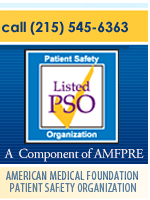Peer Review in Pathology
Since 1987, the American Medical Foundation for Peer Review and Education (AMF) has worked with many of the leading educators in the field of Pathology in reviewing hundreds of departments. These experts consider peer review as an opportunity for continuing education and believe it to be effective in gaining expertise in areas of perceived weakness. AMF Pathology peer review has verified and improved the accuracy and quality of pathology diagnoses and interpretations.
AMF recommends assessing current processes to establish opportunities for improving compliance with current requirements for Focused Professional Practice Evaluation (FPPE) and Ongoing Professional Practice Evaluation (OPPE)
Our experts recommend metrics and threshold setting for ongoing physician peer review; (Ongoing Professional Practice Evaluation).
- Metrics refer to which data should be measured and how. Retrospective random review, targeted review, and FS diagnoses are just a few included in a typical review.
- Threshold setting refers to the acceptable level of errors. Anything above that level triggers a focused review. Ideally, error rates are very low and if upward trends are detected, early steps should then be taken to address the potential source(s) of error.
- Identification of latent factors that contribute to error and improve diagnostic precision.
Evaluating the Quality of Pathology Services
On occasion, a medical staff may have some reservations about the quality of their pathology services with particular reference to accuracy and the formats of the reports. Through a review of laboratory organization, staffing, quality assurance mechanisms in place and actual evaluation of surgical and cytopathology slides, AMF can determine the accuracy of diagnosis and the completeness and timeliness of reports. A recent evaluation determined that diagnostic accuracy was quite good, but that the lack of standardized reporting formats and excessive verbiage in the reports was causing the medical staff great difficulty in determining the final diagnosis and important prognostic indicators for the management of patients. The site visit team was also able to determine that potential weak areas within the handling of small biopsies from the endoscopy suite had resulted in some sentinel mislabeling of patient samples. Recommendations by AMF pathology team resolved these issues for the department.
- The assessment of rates of minor and major disagreements for the pathology laboratory in anatomic pathology as a group and individually.
- Assessment of patterns of practice for the group of pathologists as a whole and individuals.

